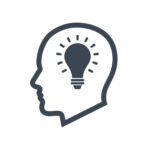Learning moves courage, curiousity and capability
At Hyppobrain we believe learning is not an event.
We build learning architecture thats tangible.
Not one-off trainings. Not theoretical frameworks.
But sustainable capability growht that aligns people, culture and strategy.
What do we do?
We build capability that lasts
Following a training or course is easy
Learning with impact is hard
We design learning programs with impact – always connected with your business goals
Our work goes beyond the delivery of a learningschedule or offering ad hoc learnings
We bridge learning, performance, and impact
Our core principles
Strategic focus
Every learning initiative starts with your strategic objective – not with a course title.
We connect learningoutcome directly to measurable business goals.
Measurable outcomes
We define what succes means before we design.
Clear, actionable learning goals ensure that every effort contributes to real improvement.

Sustainable impact
We build systems, not sessions.
Capability frameworks that grow with your organisation and evolve as your market changes.
What we offer
Learning Program Design
We design customised learning programs that align learning strategy with business strategy.
From capability mapping to measurable impact – your program becomes a catalyst for growth, not a side project.
- Clear capability roadmap linked to business metrics
- Cross-functional learning architecture
- Systematic evaluation of learning impact
Learning Journey Design
Learning is not linear – it’s a journey.
We design blended, human-centred journeys that make learning stick.
From digitalisation to personals leadership, every journey integrates reflection, feedback and growth momentum.
Learning Solution Design
We combine design, strategy and didactic insight to build learning solutions that work in practice, not just in slides.
At Hyppobrain we don’t believe in:
- One-off trainings. A presentation doesn’t change behaviour.
- Attendance as succes. Time spent is not learning.
- Templates. Learning isn’t one-size-fits-all.
- Events. Engagement must be continuous.
APPROACH
Our Approach: Results-Driven L&D Alignment
Talking stage
It begins with human connection. No fancy presentation fueled with agentic creations.
We explore your strategy, pain points and goals to asses alignment between business needs and learning ambitions.
– Strategic alignment assesment
– Current state analysis
Mapping
We map existing learning processes, culture and systems.
This becomes the blueprint for your future capability architecture.
Learning architecture
Learning without structure is random. Now we connect the dots. We design an integrated learning framework: journeys, tools and metrics – all connected to your strategy.
Implementation and support
We guide you through rollout and adoption, ensuring measurable progress and internal ownership.
The endgame
Sustainable, autonomous learning systems.
We help your teams take the lead so learning keeps evolving – even when we’re gone.
WHY HYPPOBRAIN
Professional expertise

Didactic Excellence
IKZ coordinator background
I’ve evaluated learning quality at every level – infrastructure, goals, output, and impact. I know what separates good from great.
- Learning programs built for measurable impact
- Quality frameworks that ensure succes
- Strategic alignment from input to outcome

Quality & Impact expertise
15+ years from classroom to strategy
Real teaching experience meets strategic thinking. I don’t just design learning – I’ve delivered it, refined it, and mastered it.
- Programs that actually work in practice
- Adult learning principles that drive results
- Proven methodologies, not theory

Bridge Builder
Private sector & education connector
Years as funding partner and sparring partner between education and business. I speak both languages fluently.
- Learning solutions that fit business reality
- Cross-sector insights for competitive advantage
- Programs that satisfy both HR and finance
Lead by example
We don’t just talk capability – we live it.
Explore how strategic L&D turns business challenges into growht opportunities.
Disclaimer: we use the official European digital competency framework for digital learnings.

Lead by example: Digital competency
Let's talk
Strategic analysis of the learningneed
In this step we test the current level for ‘digital safety’ and ‘use of new technologies’. Because the development of these skills are nessecary for the implementation of new technologies within 6 months.
25 employees tested a Level B for ‘digital safety’ and ‘use of new technologies’.
25 employees tested for digital safety and their current level is:
– They can identify simply ways to protect devices and digital content.
– They can differentiate risks and threats in digital enviroments.
– They can follow simple safety and security measures.
– They can identify simple ways to have due to riability and privacy
25 employees tested for the ‘use of new technologies’:
– They can identify digital needs.
– They can select some digital tools and possible technological responses to solve those needs.
– The can choose simple ways to adjust and customise digital environments to personal needs.
Mapping
This is important. In this case we use the offical European digital competency framework that defines every skill in the diferent levels.
For the 25 targeted people we want to go from level B to level C.
Desired Learningoutcome for digital safety is:
– They can apply different ways to protect devices and digital
content.
– They can differentiate a variety of risks and threats in digital environments,
– They can apply safety and security measures.
– They can employ different ways to have due regard to reliability and privacy
The learningoutcome for ‘the use of new technologies’ is:
– They can asses digital needs,
– They can apply different digital tools and possible technological responses to solve those needs.
– They can use different ways to adjust and customise digital environments to personal needs.
Learningjourney architecture
To go from a level B (current level) to a level C (desired outcome) we designed a blended learning roadmap for these specific digital skills.
Implementation
This is resource planning, timeline development and succes metrics.
Lead by example: Retention issue’s
Lets Talk
This organisation operates in a very competitive industrie. They want to grow there business (customers&Quality) but they can’t keep there employees. They leave before there 3th year on there payroll.
They already did 2 surveys because they want to know the reason(s) why people leave so early. One for the people with less then 3 years in the company and one for the people how already left.
Strategic analysis of the learningneed
Based on the surveys we could read the following:
– Presure to be the best (always)
– My time doesn’t excist untill the job is done
– Figure it out-mentality
– If you can’t handle it, you don’t belong
– Work hard and don’t play
We divided this ‘leavingproblem’ in 3 key areas.
Lack of individual soft skills
- Ask for help
- Prioritising tasks
- Schedule management
- Difference between high and low energy tasks
- Teamwork
- Identifying learning opportunities
Lack of individual hard skills
- Use of specific programs
- Analytic presentation skills
- Selling skills
- Role description in various projects
- …
Lack in leadership
- Active mentoring
- Feedback
- Failure&grow mentality
Mapping
After analysing learning needs, we decided to build a developent journey that adressed these 3 growth blockers.
Soft skills: Personal leadership
Goal: emphasise the importance of agency. Development of a ‘personal leadership’- toolkit. It contains various personal soft skills:
– timemanagement, stressmanagement,
– recognising high and low energy taksk,
– recognising learningopportunities,
– recognising team vs self agency
– …
Hard skills: Continuous learning
Set up a learningprogram for all hard skills needed. Each hard skill requires a basic minimum standard for output.
If the hard skill is well know and applied, you follow the same learningprogram on the following level.
Working in different levels for hard skills (differentiate) is more efficiënt and effective in learningtime and learningquality.
Added new roles for managers
Create a new blended learningjourney of new skillsets for all managers that contains:
– Active applying mentoring teammembers
– Recognise and apply faillure and growt opportunities within people
Learningjourney architecture
To go from a certain siuation to a desired reality we need action.
For each soft and hard skill and also for the added leadershipskills we designed a learning architecture of different learningjourneys that was blended and cross-functional. So we could ensure sustainable outcomes.
Implementation
This is resource planning, timeline development and succes metrics.
Do you want to test your own individual digital maturity?
Select your language, scroll down and start. No tricks, immediate feedback.
Ready to move the needle?
Let’s talk about your learning strategy.
Together, we’ll turn capability into your organisation’s most valuable asset.
